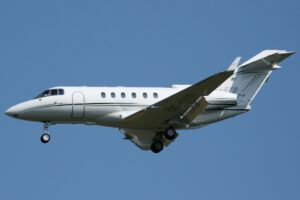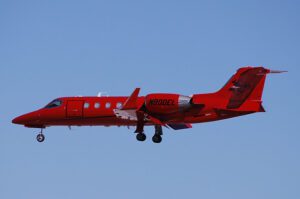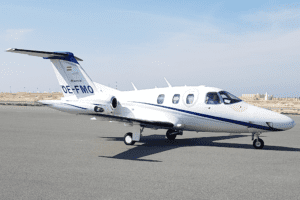 Doing leg-work is exhausting. No, not the kind at the local gym, the leg work we do searching our databases, sending emails, and calling with our operators. It’s what we do to find the perfect air charter or emptyleg flight for our clients. We have touched on many aspects of the private air charter business in our previous blog post articles from buying your own jet to reviews of the most popular categories, models, and hourly charter rates. We also detailed how, if your private air travel needs are below 50 hours per year, private air charter is a better option than fractional ownership. As we look at the weekly, yes weekly, changes to jet charter company membership deals and jet card offers, we find that they really aren’t as much of a cost savings as they are time savers. We know time is money so we can see why, even if they are often not the lowest priced way to fly privately, they can be the most efficient, especially with the larger more reputable firms. While we are an excellent alternate option, we do not market our services as a brokerage firm. We prefer to act as the bona fide agent for our clients seeking private air charter at attractive prices. The definition of the term “bona fide” identifies with us as “sincerely, without intention to deceive”. We charge a modest commission to the operator for helping them move aircraft that they would normally fly without passengers, that is an emptyleg. Unfulfilled, non-revenue emptylegs are flights the operator would otherwise absorb as a cost or pass that cost on to the customer flying a revenue leg. Finding customers for emptylegs isn’t an easy task because it is a very competitive business and the amount of work needed to find the perfect solution for a client can take days, weeks, and even months to put together. A bona fide agent like us really has to love what they are doing because sometimes our very hard efforts are rewarded with “that’s too expensive” or “I booked something else,” leaving us unpaid for our efforts. Fortunately, loyal clientele builds quickly if you get a reputation for making things happen and offering great value for client’s flights needs. Let’s take a peek into the process and why we can be such an asset to anyone that flies private.
Doing leg-work is exhausting. No, not the kind at the local gym, the leg work we do searching our databases, sending emails, and calling with our operators. It’s what we do to find the perfect air charter or emptyleg flight for our clients. We have touched on many aspects of the private air charter business in our previous blog post articles from buying your own jet to reviews of the most popular categories, models, and hourly charter rates. We also detailed how, if your private air travel needs are below 50 hours per year, private air charter is a better option than fractional ownership. As we look at the weekly, yes weekly, changes to jet charter company membership deals and jet card offers, we find that they really aren’t as much of a cost savings as they are time savers. We know time is money so we can see why, even if they are often not the lowest priced way to fly privately, they can be the most efficient, especially with the larger more reputable firms. While we are an excellent alternate option, we do not market our services as a brokerage firm. We prefer to act as the bona fide agent for our clients seeking private air charter at attractive prices. The definition of the term “bona fide” identifies with us as “sincerely, without intention to deceive”. We charge a modest commission to the operator for helping them move aircraft that they would normally fly without passengers, that is an emptyleg. Unfulfilled, non-revenue emptylegs are flights the operator would otherwise absorb as a cost or pass that cost on to the customer flying a revenue leg. Finding customers for emptylegs isn’t an easy task because it is a very competitive business and the amount of work needed to find the perfect solution for a client can take days, weeks, and even months to put together. A bona fide agent like us really has to love what they are doing because sometimes our very hard efforts are rewarded with “that’s too expensive” or “I booked something else,” leaving us unpaid for our efforts. Fortunately, loyal clientele builds quickly if you get a reputation for making things happen and offering great value for client’s flights needs. Let’s take a peek into the process and why we can be such an asset to anyone that flies private.
Operators
Air charter operators are a very diverse group. Some operators are so busy that you can consider yourself lucky to get a call back or reply to an air charter request. They can’t be blamed for this because their flight departments are usually very complex with limited staff who can’t waste time providing quotes to every broker looking for a flight for a client that thinks it will cost just a little more than flying First Class. Of course we know a First Class ticket is nowhere near the price of a private jet charter. Even if you go with an operator that offers flights by the seat, they are considerably higher than a First Class ticket. Only if the flight is a normalized route like NY to Miami that they are trying to fill daily, will these flights get in the range of a First Class ticket. So when a broker or a company like ours reaches out, it’s your reputation for having the clientele that gets the return call. We maintain extensive databases of all our operators. We know where they fly, what they fly, and how often. We know their strengths and weaknesses. Calling a California based operator for that Miami to NY request will not be prudent, as many operators have a preference for their routes. Yes, some fly anywhere and everywhere, but that’s a smaller group, and tend to be more expensive at quote time. You have to have a game plan to match the client to the operator. Many brokers pay large monthly membership fees to companies that organize this data for them, but like with anything else, you get what you pay for. I find that these services tend to give preference to the operator that pays for the “enhanced” listing, so when you search they come up first regardless of if that flight is in their wheelhouse. We prefer to work our own database of operators. They don’t have to sign any agreement with us or give us exclusive pricing. Each flight stands on its own merit. If we can find an operator motivated to move a jet or even a turbo prop in the path our client needs to fly, the good pricing speaks for itself. This doesn’t happen overnight as these relationships are nurtured over time and it’s a never ending process. However, it does take a lot of leg work, something we are happy to do on behalf of our consistent clients. Now lets take a look at this private flyer.
Private Flyers
There is a saying in the business, “Jet Money”, and I hate this terminology. It basically means that only certain people have the type of money to fly private. Anyone with need and desire can figure a way to fly private. I remember the first time I took a call from a very nice gentleman who was looking for regular flights from the west coast of Florida to Texas for medical treatments. He didn’t need ambulatory flights, he just hated flying commercial. The client was wheelchair bound and had to be lifted from the chair into the First Class seat he would purchase on the commercial plane. He explained to me it could be a great experience, but more often it was humiliating and done with no concern for his dignity. I fully understood, and knew that even though he had the financial means to pay for the private flight, we would have to find the right plane, and more importantly, the right crew. It took time, and a little trial and error, but we finally found the nice client an operator that was happy to accommodate his needs. I wouldn’t define this person as having “Jet Money” as much as I would call him a human being needing our help.
Since Covid-19 flying private will never be the same nor will flying commercial, it was a game changer for both areas of the industry. It has created a new category of private fliers that will find a way to fly private just to not have deal with the commercial airlines. The heavy layoffs and early retirements set back the commercial industry in a way no one could have expected. Although crew shortages are a problem, the prevailing problem I see is that some airlines failed to invest in the operations IT. Some systems are personnel intensive when it comes to scheduling and tracking crew, luggage, resources, maintenance, and the like. They have not automated enough to adequately deal with delays or weather issues. This is why the commercial airline systems keep collapsing. Just this past holiday Southwest airlines imploded mainly due to antiquated IT software with little or no AI. The airlines need to focus on operations personnel and systems. Just ask yourself, why are they still printing tickets, or why don’t they have iPhone like air tags for luggage. With all the technology available, it has to do with upper management focused solely on profitability and shareholders coupled with a lack of willingness to invest in systems.
The point is you don’t have to be a millionaire to fly private. There are great deals out there if you have someone in your court like us looking for them on a regular basis. There are times when it’s a no brainer to hop on an empty and other times where it makes perfect sense to fly commercial.
We are only scratching the surface of what we do and how we fit within the air charter market in this article. We are willing to do the leg work that you as our client shouldn’t have to do. When we’re looking for a flight for a client, we often say to each other, how in the world would our client have found this solution on their own or through a flight membership program. The answer is they wouldn’t. Often the specific flight doesn’t exist, but by seeing all the pieces we can help figure out the right pieces to the puzzle and create that flight. It takes the right team to put these together and that’s what makes us special. Next week we will take a peak at the upcoming hot travel for Q1 and especially for the big sporting events, holiday fun, and the Miami International Boat Show.
Until then, Be Social, Fly Private! Join Now Follow us on Facebook Follow us on Instagram








 Size matters when its a private jet charter. Luckily there are a lot of jet sizes to choose from when it comes to selecting your charter. They start in the category of very light jet all the way to a Boeing Business Jet that is the size of a commercial airliner. Today we will take a look at the entry level of the 4 categories in the air charter world, the very light jets. Since there are many in this category, we will discuss 3 of the hotter very light jets. It really comes down to what the mission is and how many people will be aboard. It also can have a lot to do with who will be flying. Sometimes the CEO will need his or her own space away from the travel group, and then only certain jets will do. Or the trip is for a large group and the seating capacity will be the main priority. Cargo space may be a deciding factor for a golfing weekend or a fashionista with an entourage of luggage. There are also various cruise speeds and the range flown without a fuel stop to consider. All in all, the process of choosing the right jet for a charter can be simple or at times very complex, especially on a multi-leg tour. Let’s look at the Very Lights this week.
Size matters when its a private jet charter. Luckily there are a lot of jet sizes to choose from when it comes to selecting your charter. They start in the category of very light jet all the way to a Boeing Business Jet that is the size of a commercial airliner. Today we will take a look at the entry level of the 4 categories in the air charter world, the very light jets. Since there are many in this category, we will discuss 3 of the hotter very light jets. It really comes down to what the mission is and how many people will be aboard. It also can have a lot to do with who will be flying. Sometimes the CEO will need his or her own space away from the travel group, and then only certain jets will do. Or the trip is for a large group and the seating capacity will be the main priority. Cargo space may be a deciding factor for a golfing weekend or a fashionista with an entourage of luggage. There are also various cruise speeds and the range flown without a fuel stop to consider. All in all, the process of choosing the right jet for a charter can be simple or at times very complex, especially on a multi-leg tour. Let’s look at the Very Lights this week.


 The 50 hour guideline for flying private.
The 50 hour guideline for flying private.